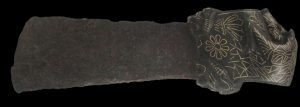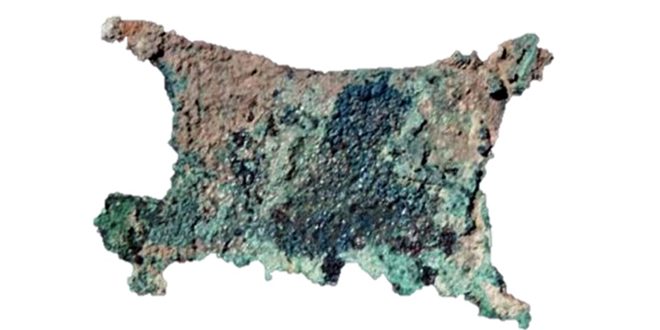Recent archeological data have confirmed that the Syrians were the first to discover copper . This fact was proven after the discovery of two copper pieces in Tal Al-Sabi Al-Abyad archeological site in Raqqa which date back to the end of the Pre-Pottery Neolithic B (PPNB) period.
Dr. Mahmoud Al-Sayyed, a researcher and historian at the General Directorate of Antiquities and Museums, stressed in a statement to SANA that the development of the mining industry in the world started in Syria.
A unique axe, made in a highly professional and technical way and with beautiful decorations, was found in Ras Shamra archeological site in Ugarit, said Dr. Al-Sayyed. He added that the axe, which is currently kept in Aleppo Museum, dates back to the New Bronze Age in the 14th century BC and it is one of the oldest examples in the world about iron mining.
Al-Sayyed pointed out that the process of iron mining developed notably and the use of this metal spread in the first millennium BC in the ancient East.
 The unique ax represents a weapon that embodies the world’s first attempts to manufacture steel and the first attempts to use three metals at the same time; copper, iron and gold, in making a weapon or a metal tool.
The unique ax represents a weapon that embodies the world’s first attempts to manufacture steel and the first attempts to use three metals at the same time; copper, iron and gold, in making a weapon or a metal tool.
According to Al-Sayyed, the blade of the ax was made of steel with carbon added to its end. A copper sheath, decorated with sculptures representing animals, was made to cover the blade and to be used as a handle.
Dr. Al-Sayyed went on to say that the first casting for bronze ingots was discovered in Ras Abin Hani archeological site in Lattakia. The cast is made of stone and it took the form of a huge stone slab installed in the ground with the shape of the ingot engraved on its surface.
This piece of antiquity is currently kept in the Lattakia Museum, said Dr. Al-Sayyed.
Hamda Mustafa

